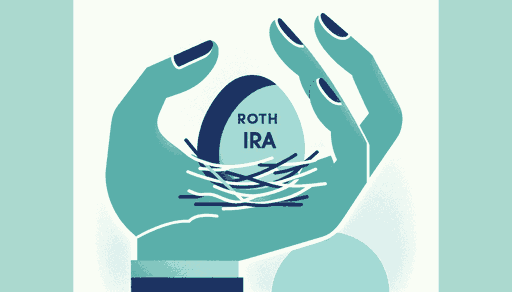What is a Roth IRA?
Learn about the Roth IRA, a powerful retirement savings option offering tax-free growth and withdrawals, and understand how it fits into your long-term financial planning.

A Roth IRA (Individual Retirement Account) is a type of retirement savings account that offers a unique tax advantage: contributions are made with after-tax dollars, but both the investment growth and withdrawals during retirement are tax-free, under certain conditions. This feature makes Roth IRAs an attractive option for many savers, particularly those who anticipate being in a higher tax bracket in retirement.
Key Features of Roth IRAs
- Tax-Free Growth and Withdrawals: The most significant advantage of a Roth IRA is the ability to grow investments tax-free and withdraw the money tax-free in retirement.
- Contribution Rules: Contributions to a Roth IRA are made with after-tax dollars, meaning they are not tax-deductible at the time of contribution.
- Income Limits: Roth IRAs have income limits for eligibility. If your income exceeds a certain threshold, you may not be able to contribute directly to a Roth IRA.
- No Required Minimum Distributions (RMDs): Unlike Traditional IRAs, Roth IRAs do not require minimum distributions after reaching a certain age, allowing the investments to grow tax-free for longer.
Contributions and Limits
For 2024, the contribution limit for a Roth IRA is $7,000 for individuals under 50 and $8,000 for those 50 and older, which includes catch-up contributions. It’s important to stay updated on these limits as they are subject to change and can impact retirement planning strategies.
Eligibility and Withdrawal Criteria
- Age Considerations: There is no age limit for contributing to a Roth IRA, as long as you have earned income.
- Withdrawal Flexibility: One can withdraw contributions (but not earnings) from a Roth IRA at any time without penalties or taxes. For earnings, tax-free and penalty-free withdrawals are allowed after the age of 59½ and once the account has been open for at least five years.
Strategic Use in Retirement Planning
The decision to use a Roth IRA depends on individual financial circumstances and future expectations. Those who expect their tax rate to be higher in retirement than it is currently may find a Roth IRA particularly beneficial.
Example of Roth IRA Benefits
For example, if a 30-year-old starts contributing $5,000 annually to a Roth IRA and continues until age 65, assuming an average annual return of 7%, the account would grow to about $697,000. Upon retirement, all withdrawals from this account, including the earnings, would be tax-free.
Roth IRA vs. Traditional IRA
- Tax Treatment: The key difference between a Roth IRA and a Traditional IRA is the tax treatment. Roth IRA contributions are made with after-tax dollars, offering tax-free growth, whereas Traditional IRA contributions are often tax-deductible but lead to taxable withdrawals.
- Income Restrictions: Roth IRAs have income eligibility restrictions, while Traditional IRAs do not.
Integrating Roth IRA with ProjectionLab
ProjectionLab can assist in evaluating how a Roth IRA can fit into your overall retirement planning strategy. By considering factors like your current financial situation and projected retirement income, ProjectionLab can help you make informed decisions to maximize the benefits of a Roth IRA. Learn more at ProjectionLab.